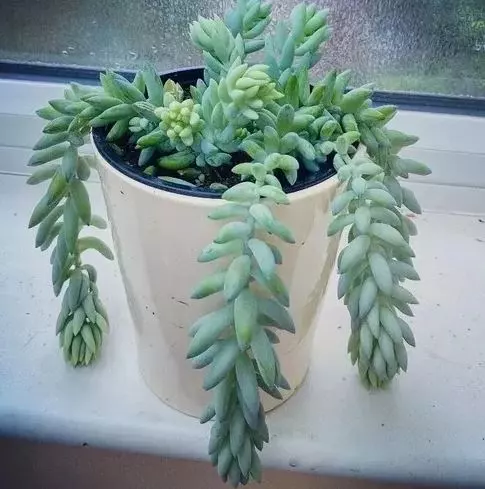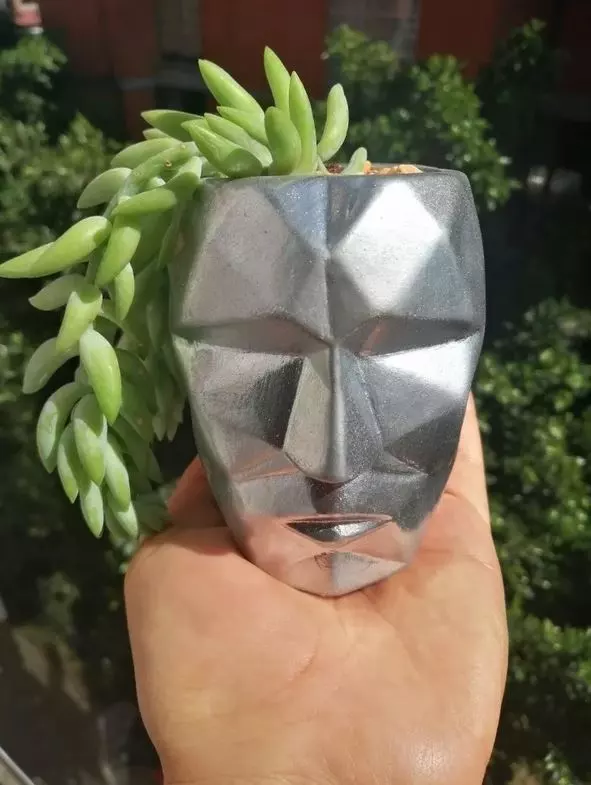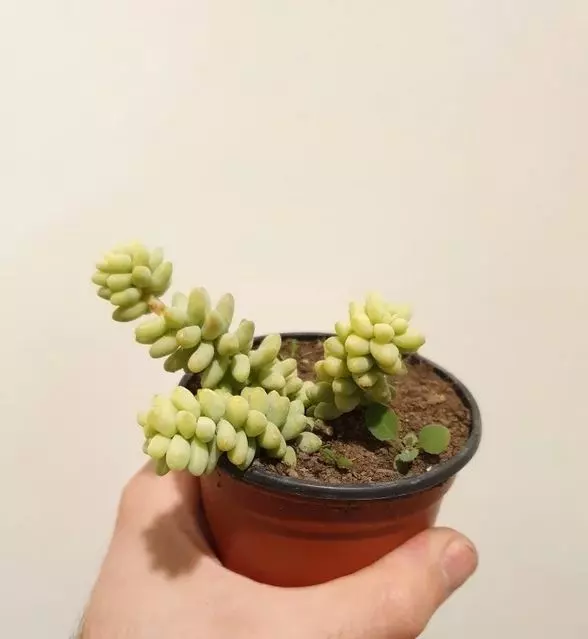The donkey tail is a unique plant. This succulent is perfect for hanging in a balcony, clay pot or basket. In this article, we will explain to you how to propagate donkey tail step by step.
In this article, we are going to show you two very easy ways to multiply or propagate this beautiful species.
Donkey’s tail Sedum morganianum is a succulent native to southern Mexico. It is also called burro’s tail. This is a succulent that adapts easily to the interior of the home.
This slow-growing plant is ideal for hanging baskets. I love to see donkey tail in clay pots in combination with other plants.
Table of Contents
Materials Needed to Propagate Donkey Tail
These are the materials needed to propagate donkey tail.
- Succulent plant Donkey Tail (Sedum morganianum) (Here you can get it if you don’t have it yet.)
- A pair of scissors or cutter
- Absorbent paper
- Substrate for succulents (here you have the one we use)
- Pots or containers
- Gravel or perlite (optional) (here you have perlite for succulents)
- Water sprayer (here you have the one we use)

How to Propagate Donkey Tail by Leaves
We recommend that you prepare yourself in advance of propagation. We advise you to water your plants a couple of days before starting propagation so that the cuttings, both leaf and stem, have enough time to hydrate and make water reserves between their tissues.
1- Select and Separate Leaves
Select healthy leaves. We recommend selecting leaves close to the base, but not the older ones because they have less chance of thriving.
Do not take the leaves from the tips because they are the new growth and it is best to keep them growing. Also, if you take these leaves, you will damage the appearance of the plant.
To separate the leaves, you should simply take the stem with one hand and with the other hand move slightly from side to side each of the leaves. This particular species is very easy to separate, with a simple movement you can make a clean separation.
2- Allow to Heal
Place your leaves on an absorbent surface, such as newspaper, cardboard, kitchen paper, or completely dry substrate. Put them in a place sheltered from rain and light, but without direct sunlight.
During this time the leaves should not come into contact with water because they can rot. It is therefore important that they are not exposed to rain and that you control the watering.
As for lighting, this succulent can burn if exposed to direct sunlight. In addition, while the new plant is being born, the mother leaf must remain hydrated, so it is advisable to protect it from excessive light and high temperatures.
3- Wait to See Growth
Once the healing process is finished you will see some roots or mini succulents start to appear on each leaf. A new baby will start to grow from the end of the leaf that was attached to the stem.
This process can take a few days to a few weeks. Wait patiently taking care of your leaves and making sure they don’t come in contact with water.
4- Move to Substrate and Start Watering.
Once the leaves have roots you can transfer them to soil and start regular watering.
Take a shallow pot or container with drainage holes and fill it with a succulent substrate.
An optional step that is highly beneficial is to mulch a thin layer of gravel or perlite over the substrate.
Lay your leaves flat on this and water them every time the substrate dries out completely. You can use a sprayer or watering can for this.

Propagating Sedum morganianum by Stem Cuttings
Now we tell you to step by step how to propagate donkey tail by stem cuttings:
1- Select Cuttings
Choose cuttings more than 2” (5 centimeters) long. They should look good, have good color, no yellow, brown, or black spots, and generally look healthy and with well-hydrated leaves.
2- Separate the Cuttings
Disinfect your scissors or cutter with alcohol. Cut the stem of your Sedum morganianum to the desired height.
3- Remove Leaves
We must remove the leaves from the lowest part of each stem. You should leave about 0.8” (2 cm) of bare stem. This is to make room for new roots and to eliminate the possibility of leaf rot.
Do not discard these leaves, you can also use them to propagate by following all the steps explained above. Or, you can simply spread them on the pot of the mother plant, and, with a little luck, they will multiply naturally.
4- Allow to Heal
Place your cuttings on an absorbent surface, in a bright place and protected from rain.
In one week the main cut will heal, as well as the small wounds made when removing the leaves.
5- Plant the Cuttings
After allowing your cuttings to heal for at least a week, you can plant them. Prepare a pot or container with a special substrate for succulents.
Stick your cuttings through the gravel layer and into the substrate. The bare part of the stem should be buried and all the leaves should be above the surface.
If your cutting is very long it will be heavy and may struggle to stay in place. If this is the case you can use a wire, clip, or stick to hold it in place.
6- Start Watering and Caring for Your New Plants
Once the cuttings are planted, wait two days to start watering.
You should water abundantly every time the substrate dries out completely. After a few days, the cuttings will take root and become new independent plants.
Remember that Sedum morganianum likes to be in very bright places, but without direct sunlight. You can place them indoors and outdoors in the shade of a tree or where they receive shade when the sun is strongest.
We hope that these two methods of how to propagate donkey tail will be of great use and that you will have success with your succulent.
Learn more about Sedum burrito Care.


